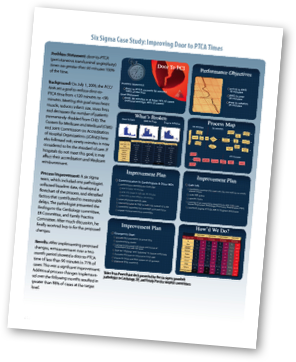Process Improvement

The clinical laboratory, with its focus on accuracy and precision of analytic procedures, developed and implemented quality control measures earlier than anatomic pathology. Many of the patient safety measures and process improvements have focused on the clinical laboratory. But APMG believes anatomic pathology is just as important and deserves equal attention. The typical anatomic pathology activities of clinical correlation, interpretation, and differential diagnosis are all examined using the tenets of traditional quality control testing.
APMG has embraced the many aspects of process improvement. One of our members (Eric F. Glassy, MD) is a green belt in six sigma. The training was performed by GE and was targeted to health care initiatives. Dr. Glassy and his team worked on several hospital-wide projects such as improving the patient registration process and “door to PTCA” times. The latter project resulted in dramatic improvements in patient care and physician satisfaction.
PDSA is another version of process improvement that was originally implemented in our private laboratory but the program has expanded to the entire organization. The Plan Do Study Act methodology has brought improvements in many aspects of our practice, such as histology workflow, transcription, client alerts, billing, and pap smear workflow. Many of these improvements have directly impacted patient safety. There are far fewer slide labeling errors, for example. We are currently using the tools of PDSA to revamp our recruitment process.
At all of our hospital facilities, our pathology group has been instrumental in developing many evidence-based Clinical Pathways. Overseeing the input of the clinical laboratory, point of care testing, nursing, and treating physicians, we have successfully implemented pathways meeting the high regulatory standards all hospital and regulatory accreditation agencies. In addition, our pathologists serve on the Critical Care, Transfusion Medicine, and Infection Control Committees for many of our affiliated hospitals.
Sample 6-sigma projects
- Door to PTCA Wait Times
- Decreasing Registration Wait times



